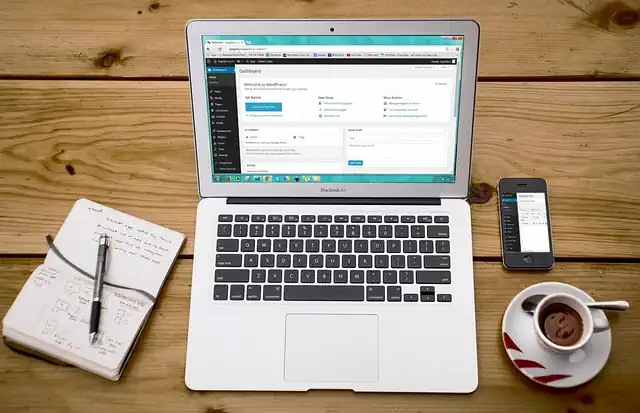How To Save Money More
Introduction

Introduction: Saving money is an essential aspect of financial planning. It helps you to achieve your financial goals, build an emergency fund, and secure your future. However, saving money can be challenging, especially if you have a limited income or high expenses. In this article, we will discuss some practical tips on how to save money more effectively.
10 Simple Ways to Cut Your Monthly Expenses
Saving money is a goal that many people have, but it can be difficult to know where to start. Fortunately, there are many simple ways to cut your monthly expenses and start saving more money. Here are 10 tips to help you get started.
1. Create a budget
The first step to saving money is to create a budget. This will help you see where your money is going and identify areas where you can cut back. Start by listing all of your monthly expenses, including rent or mortgage payments, utilities, groceries, and entertainment. Then, compare your expenses to your income and see where you can make adjustments.
2. Cut back on eating out
Eating out can be a major expense, especially if you do it frequently. Try to limit your restaurant visits and cook more meals at home. This will not only save you money, but it can also be healthier and more enjoyable.
3. Use coupons and discounts
Coupons and discounts can help you save money on everything from groceries to clothing. Look for coupons online or in your local newspaper, and take advantage of sales and discounts whenever possible.
4. Cancel unnecessary subscriptions
Do you have subscriptions to magazines, streaming services, or other services that you don’t use? Cancel them and save yourself some money each month.
5. Use public transportation
If you live in an area with good public transportation, consider using it instead of driving. This can save you money on gas, parking, and car maintenance.
6. Shop around for insurance
Insurance can be a major expense, but you may be able to save money by shopping around. Compare rates from different providers and see if you can get a better deal.
7. Cut back on energy usage
Reducing your energy usage can help you save money on your utility bills. Turn off lights and electronics when you’re not using them, and consider using energy-efficient appliances and light bulbs.
8. Buy generic products
Generic products can be just as good as name-brand products, but they’re often much cheaper. Try buying generic versions of your favorite products and see if you can save some money.
9. Use cash instead of credit cards
Using cash instead of credit cards can help you avoid overspending and keep your budget in check. Try using cash for your everyday expenses and see if it helps you save money.
10. Negotiate bills
If you’re struggling to pay your bills, don’t be afraid to negotiate with your providers. You may be able to get a lower rate or a payment plan that works better for your budget.
By following these simple tips, you can cut your monthly expenses and start saving more money. Remember, every little bit counts, so even small changes can make a big difference over time. Good luck!
The Ultimate Guide to Couponing for Beginners
Are you tired of spending too much money on groceries and household items? Do you want to learn how to save money more effectively? If so, then couponing may be the solution you’ve been looking for. Couponing is a great way to save money on everyday items, and it’s easier than you might think. In this ultimate guide to couponing for beginners, we’ll show you how to get started and how to save big on your next shopping trip.
First, let’s talk about where to find coupons. There are many different sources for coupons, including newspapers, magazines, online coupon websites, and even social media. You can also find coupons in-store, on product packaging, and through loyalty programs. It’s important to check expiration dates and any restrictions before using a coupon, so you don’t waste your time or money.
Once you have your coupons, it’s time to start organizing them. You can use a coupon binder, a coupon wallet, or even just a simple envelope system. The key is to keep your coupons organized and easily accessible. You don’t want to miss out on a great deal because you couldn’t find the right coupon.
Next, it’s important to plan your shopping trips around your coupons. Look for sales and promotions that match up with your coupons, and try to stack coupons whenever possible. This means using a manufacturer’s coupon along with a store coupon or promotion to maximize your savings. You can also use apps like Ibotta and Checkout 51 to earn cash back on your purchases.
Another great way to save money is to buy in bulk. Many stores offer discounts on larger quantities of items, so if you have a coupon for a product you use frequently, consider buying a larger size to save even more. Just be sure to check the unit price to make sure you’re getting the best deal.
It’s also important to be flexible with your brand choices. If you have a coupon for a specific brand, but another brand is on sale for a better price, consider trying the cheaper option. You might be surprised to find that you like it just as much, and you’ll save money in the process.
Finally, don’t forget to take advantage of loyalty programs and rewards programs. Many stores offer points or cash back for purchases, which can add up to significant savings over time. You can also earn rewards for referring friends or writing product reviews.
In conclusion, couponing is a great way to save money on everyday items. By finding coupons, organizing them, planning your shopping trips, buying in bulk, being flexible with your brand choices, and taking advantage of loyalty and rewards programs, you can save big on your next shopping trip. So why not give couponing a try? You might be surprised at how much money you can save.
How to Create a Budget and Stick to It
Saving money is a goal that many people have, but it can be difficult to achieve without a plan. One of the most effective ways to save money is by creating a budget and sticking to it. In this article, we will discuss how to create a budget and provide tips for staying on track.
The first step in creating a budget is to determine your income and expenses. Start by making a list of all your sources of income, including your salary, any side hustles, and any other sources of income. Next, make a list of all your expenses, including rent or mortgage payments, utilities, groceries, transportation, and any other bills you have. Be sure to include any debt payments you have, such as credit card payments or student loans.
Once you have a clear understanding of your income and expenses, it’s time to create a budget. Start by setting a savings goal. This could be a specific amount of money you want to save each month or a percentage of your income. Next, allocate your income to your expenses. Start with your fixed expenses, such as rent or mortgage payments, and then allocate money to your variable expenses, such as groceries and entertainment.
It’s important to be realistic when creating your budget. Don’t allocate more money to your expenses than you actually spend. If you’re not sure how much you spend on certain expenses, track your spending for a month or two to get a better idea.
Once you have created your budget, it’s important to stick to it. One way to do this is by using a budgeting app or spreadsheet to track your spending. This will help you see where your money is going and make adjustments if necessary. Another way to stick to your budget is by setting up automatic payments for your bills. This will ensure that you never miss a payment and avoid late fees.
It’s also important to be flexible with your budget. Life happens, and unexpected expenses can arise. If this happens, don’t be afraid to adjust your budget. Look for areas where you can cut back on expenses to make up for the unexpected expense.
Finally, it’s important to celebrate your successes. When you reach a savings goal or stick to your budget for a certain amount of time, reward yourself. This will help you stay motivated and continue to work towards your financial goals.
In conclusion, creating a budget and sticking to it is one of the most effective ways to save money. Start by determining your income and expenses, setting a savings goal, and allocating your income to your expenses. Use a budgeting app or spreadsheet to track your spending and be flexible with your budget when unexpected expenses arise. And don’t forget to celebrate your successes along the way. With these tips, you’ll be on your way to saving more money in no time.
5 Money-Saving Tips for Grocery Shopping
Grocery shopping is a necessary expense for most households, but it doesn’t have to break the bank. With a few simple tips and tricks, you can save money on your grocery bill without sacrificing the quality of your meals. Here are five money-saving tips for grocery shopping.
1. Make a list and stick to it
One of the easiest ways to overspend at the grocery store is to go in without a plan. Before you head to the store, make a list of the items you need and stick to it. This will help you avoid impulse purchases and ensure that you only buy what you need. If you’re not sure what to put on your list, try planning your meals for the week ahead of time. This will help you determine what ingredients you need and prevent you from buying items that will go to waste.
2. Shop the sales
Most grocery stores have weekly sales on certain items. Take advantage of these sales by planning your meals around them. For example, if chicken is on sale, plan to make a few meals that include chicken that week. You can also stock up on non-perishable items when they’re on sale, such as canned goods or pasta. Just be sure to check the expiration dates before you buy in bulk.
3. Use coupons
Coupons are a great way to save money on your grocery bill. You can find coupons in your local newspaper, online, or through store loyalty programs. Before you head to the store, check to see if there are any coupons available for the items on your list. Just be sure to read the fine print and make sure the coupon is still valid.
4. Buy generic
Brand-name products are often more expensive than their generic counterparts, but they’re not always better. In fact, many generic products are made by the same companies that produce the brand-name products. Try buying generic versions of the items on your list and see if you notice a difference. You may be surprised at how much money you can save without sacrificing quality.
5. Shop at discount stores
Discount stores, such as Aldi or Lidl, offer lower prices on groceries than traditional supermarkets. While they may not have the same selection as larger stores, they often have a good variety of basic items at a lower cost. Just be sure to check the expiration dates and compare prices to make sure you’re getting the best deal.
By following these five money-saving tips, you can reduce your grocery bill without sacrificing the quality of your meals. Remember to make a list, shop the sales, use coupons, buy generic, and shop at discount stores. With a little planning and effort, you can save money on your grocery bill and put those savings towards other expenses or savings goals.
The Benefits of Meal Planning for Your Wallet
Are you tired of constantly overspending on groceries and eating out? Do you want to save money and eat healthier at the same time? Meal planning may be the solution you’ve been looking for.
Meal planning involves taking the time to plan out your meals for the week or month ahead of time. This can include creating a grocery list, prepping ingredients in advance, and even cooking meals ahead of time to save time during the week. Not only does meal planning save time and reduce stress, but it can also save you money in the long run.
One of the biggest benefits of meal planning is that it allows you to avoid impulse purchases at the grocery store. When you go to the store without a plan, it’s easy to get distracted by sales or new products and end up buying more than you need. By planning out your meals in advance and creating a grocery list, you can stick to a budget and avoid overspending.
Another way meal planning can save you money is by reducing food waste. When you plan out your meals, you can buy only the ingredients you need and use them before they go bad. This means you won’t have to throw away unused produce or leftovers, which can add up over time.
Meal planning can also help you save money by reducing the number of times you eat out. When you have a plan for what you’re going to eat each day, you’re less likely to resort to takeout or dining out. This can save you hundreds of dollars each month, especially if you’re used to eating out frequently.
In addition to saving money, meal planning can also help you eat healthier. When you plan out your meals, you have more control over what you’re eating and can make sure you’re getting a balanced diet. You can also choose healthier options and avoid processed foods and sugary snacks.
If you’re new to meal planning, it can seem overwhelming at first. But with a little practice, it can become a habit that saves you time and money. Here are some tips to get started:
1. Start small. Don’t try to plan out every meal for the entire month at once. Start with planning out a few meals for the week and gradually increase as you get more comfortable.
2. Use what you already have. Before you go grocery shopping, take inventory of what you already have in your pantry and fridge. This can help you avoid buying duplicate items and save money.
3. Look for sales and coupons. When you’re creating your grocery list, look for sales and coupons for the items you need. This can help you save money and stick to your budget.
4. Prep in advance. Take some time on the weekend to prep ingredients or even cook meals ahead of time. This can save you time during the week and make it easier to stick to your meal plan.
In conclusion, meal planning is a simple and effective way to save money and eat healthier. By taking the time to plan out your meals in advance, you can avoid impulse purchases, reduce food waste, and eat out less often. With a little practice, meal planning can become a habit that saves you time and money in the long run.
DIY Home Repairs to Save Money on Maintenance
Are you tired of constantly shelling out money for home repairs and maintenance? It can be frustrating to see your hard-earned cash disappear into fixing leaky faucets, creaky doors, and other household issues. But what if we told you that you could save money by doing some of these repairs yourself? That’s right, with a little bit of DIY know-how, you can tackle some of these tasks and save yourself some serious cash.
First up, let’s talk about plumbing. Plumbing issues can be some of the most expensive repairs you’ll encounter as a homeowner. But before you call in a professional, consider trying to fix the problem yourself. For example, if you have a leaky faucet, it’s often just a matter of replacing the washer or O-ring. You can find these parts at your local hardware store and with a few simple tools, you can have your faucet working like new in no time.
Another common plumbing issue is a clogged drain. Instead of reaching for harsh chemicals, try using a plunger or a drain snake to clear the blockage. These tools are inexpensive and can save you a lot of money compared to calling in a plumber.
Next, let’s talk about electrical repairs. While we don’t recommend tackling anything too complicated, there are some simple electrical repairs you can do yourself. For example, if a light switch isn’t working, it’s often just a matter of replacing the switch itself. Again, you can find these parts at your local hardware store and with a little bit of research, you can easily replace the switch yourself.
If you’re comfortable working with electricity, you can also try replacing light fixtures or ceiling fans. Just be sure to turn off the power before you start working and follow all safety precautions.
Moving on to carpentry, there are a lot of simple repairs you can do yourself that can save you money. For example, if you have a squeaky door, it’s often just a matter of tightening the hinges or adding some lubricant. If you have a loose doorknob, you can often fix it by tightening the screws.
If you’re feeling more ambitious, you can also try building your own furniture or shelves. There are plenty of tutorials online that can guide you through the process, and with a little bit of practice, you can create some beautiful pieces for your home.
Finally, let’s talk about landscaping. While it may not seem like a home repair, maintaining your yard can be a big expense. But with a little bit of DIY know-how, you can save yourself some money. For example, instead of hiring a landscaper to install a new garden bed, you can do it yourself with some basic tools and materials.
You can also save money by doing your own lawn care. Instead of hiring a company to mow your lawn, invest in a good quality lawn mower and do it yourself. Not only will you save money, but you’ll also get some exercise and fresh air in the process.
In conclusion, there are plenty of DIY home repairs you can do yourself to save money on maintenance. From plumbing to carpentry to landscaping, with a little bit of research and practice, you can tackle these tasks and keep your home in tip-top shape without breaking the bank. So next time you encounter a household issue, consider trying to fix it yourself before calling in a professional. You might be surprised at how much money you can save.
Investing for Beginners: How to Grow Your Savings
Saving money is a crucial aspect of financial stability. However, it can be challenging to save money, especially when you have bills to pay and other expenses to take care of. Fortunately, there are several ways to save money more effectively. One of the most effective ways is by investing your money. Investing can help you grow your savings and achieve your financial goals faster. In this article, we will discuss how to invest for beginners and grow your savings.
The first step to investing is to understand the different investment options available. There are several investment options, including stocks, bonds, mutual funds, and real estate. Each investment option has its own risks and rewards, and it’s essential to understand them before investing your money. For beginners, it’s advisable to start with low-risk investments such as bonds and mutual funds. These investments are less volatile and offer a steady return on investment.
Once you have identified the investment option that suits your needs, the next step is to open an investment account. You can open an investment account with a brokerage firm or an online investment platform. When choosing an investment platform, it’s essential to consider the fees charged, the investment options available, and the ease of use. Some investment platforms offer low fees and a wide range of investment options, making them ideal for beginners.
After opening an investment account, the next step is to start investing. It’s essential to start small and gradually increase your investment as you gain more experience. You can start by investing a small amount of money in low-risk investments such as bonds and mutual funds. As you gain more experience, you can diversify your portfolio by investing in different investment options.
Diversification is crucial when it comes to investing. It involves spreading your investments across different investment options to reduce the risk of losing all your money in one investment. Diversification can help you achieve a balance between risk and reward and increase your chances of achieving your financial goals.
Another essential aspect of investing is to have a long-term investment strategy. Investing is not a get-rich-quick scheme, and it requires patience and discipline. It’s essential to have a long-term investment strategy that aligns with your financial goals. A long-term investment strategy involves investing in a diversified portfolio and holding onto your investments for an extended period. This strategy can help you ride out market fluctuations and achieve your financial goals over time.
In conclusion, investing is an effective way to grow your savings and achieve your financial goals. As a beginner, it’s essential to understand the different investment options available, open an investment account, start small, diversify your portfolio, and have a long-term investment strategy. Investing requires patience and discipline, but it can help you achieve financial stability and security. With the right investment strategy, you can save money more effectively and achieve your financial goals faster.
Conclusion
Conclusion: To save money more effectively, it is important to create a budget, track expenses, reduce unnecessary spending, and find ways to increase income. Small changes in daily habits can add up to significant savings over time. It is also important to have a clear financial goal in mind and to stay motivated and disciplined in achieving it. By following these steps, anyone can save money and achieve financial stability.







